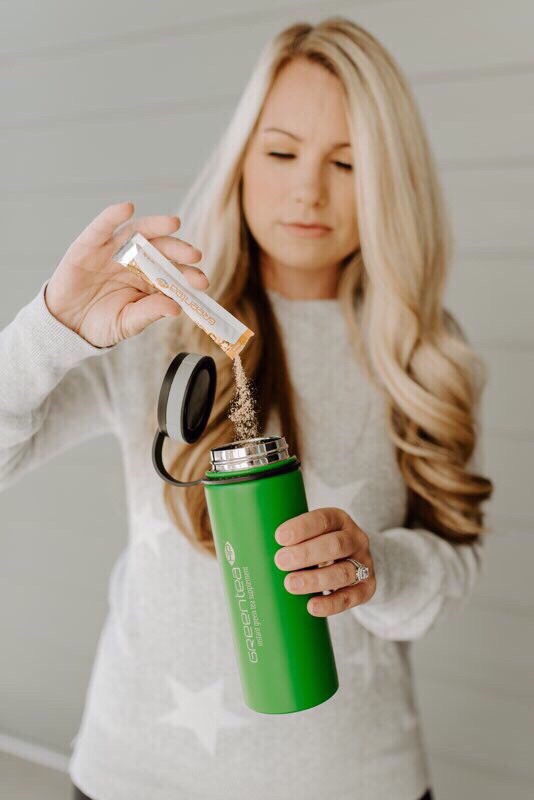”Green tea can’t prevent every cancer, but it’s the cheapest and most practical method for cancer prevention available to the general public.” ~ Hirota Fujiki, Chemist – National Cancer Center Research Institute – Tokyo, Japan

Cancer is something that concerns pretty much everyone – for good reason. One in four of us will at some point in our lives be diagnosed with some form of cancer and one in five of us will die from it. Cancer is the biggest killer in the US behind heart disease. According to the American Cancer Society, over one million patients are diagnosed with cancer each year. This stealthy killer can strike anyone, whether you are a child, a healthy adult or a senior. Cancer can take hold in any organ and without proper detection, you may not know until it is too late. It is well known that “the cure” can seem worse than the disease. Most of us have known someone who has suffered through the horrors of radiation, chemotherapy, surgery and other treatments to try and treat this horrible disease. Why not try to keep cancer from settling in to begin with?
Despite its fearsome reputation, most forms of cancer can be avoided.
Amazingly, 60% of cancers found in woman could be prevented simply by changing one’s eating habits. The same is true for 30-40% of cancers found in men. The National Cancer Institute has issued special dietary guidelines to help us avoid cancer, and it even backs a special “Designer Nutrient Program” that investigates the power of cancer-fighting foods and nutrients such as garlic, ginko biloba and Echinacea. One of the more recent additions to their program is green tea.
How Does Cancer Start and Spread?
We don’t know exactly what causes cancer, but most scientist that the disease develops in two stages; initiation and activation. During the initiation stage, healthy cells are exposed to substances called initiators. Cigarette smoke, radiation, environmental pollutants, chemicals, pesticides, UV light and dietary fat can all be initiators. These initiators break into the cell and “hijack” it’s DNA, altering the “instruction manuals” that tell the cell how to behave.
Initiated cells may lie quietly in the body for weeks, months or even years without causing damage, but at some point they can become activated. Once activation occurs, the cancerous cells begin to multiply uncontrollably, forming a mass of new tissue called a tumor. The tumor invades the surrounding healthy tissue and structures, using up nutrients and crowding out the healthy cells. Eventually, the tumor can destroy large amounts of healthy cells and tissue, causing devastation, disease and possibly death.
Cancer activators can include dietary fat, obesity, asbestos, alcohol, smoked, cured or charbroiled meats among many others. Fat is one of the few foods that can initiate and promote cancer. Fat has been directly linked to the development of breast, colon and prostate cancer.
Cancer’s Seven Warning Signals
- Change in bowel or bladder habits
- Unusual bleeding or discharge
- Thickening or lump in the breast or elsewhere
- Obvious change in wart or mole
- Nagging cough or hoarseness
- A sore throat that does not heal
- Indigestion or difficulty swallowing
If you are in good health, your immune system has a better chance of seeking out and destroying the initiated cells before they activate, but if your immune system has been weakened or if it is overwhelmed by having to fight too many mutated cells at once, some cancer cells may slip by. Once they take root and form a tumor, the cancer process is well underway.
Luckily, many natural and readily available substances help fight both initiation and activation. Some of the most powerful of these protectors are the antioxidants found in a wide variety of foods. Well known antioxidants include vitamin A, vitamin C, vitamin E, selenium, bioflavonoids and polyphenols.
Antioxidants work against oxidation. Oxidation is the process that turns bananas black, makes bread stale and causes metal to rust. The same process occurs in the body and is believed to be one of the biggest causes of disease.
Oxygen travels around the body in pairs. These pairs of oxygen molecules which peacefully share electrons are called “02” by chemists; however, sometimes as a part of the body’s metabolic reactions, a double molecule splits and becomes two separate oxygen molecules known as singlet oxygen.
Singlet is one of a larger group of substances known as “free radicals.” Free radicals are highly reactive and unstable molecules.In the case of singlet oxygen, since it has been separated from its other half it is missing an electron. Like a lovesick teenager, singlet oxygen desperately wants to be paired up, so it races crazily through the body in search of an electron to replace the one it lost. Desperate to find an electron, it will greedily snatch one from another molecule. Of course the molecule that was robbed of an electron is now upset and it in turn steals some other molecule’s electron. You can imagine how cells, tissues, organs and entire body systems can be degraded and even destroyed if enough of this “electron stealing” goes on. This is why many scientists believe that free radicals are a major cause of both aging and disease.
Next week: Combating Cancer Part 2 – Antioxidant To The Rescue
